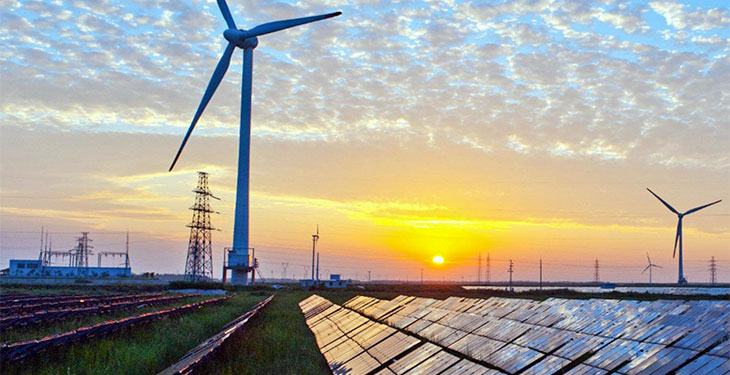The electricity sector continued to improve its carbon intensity in 2018 due to increased renewable energy and natural gas power generation and investments in energy efficiency, even as a stronger economy and volatile weather boosted energy demand and contributed to a rise in economy-wide carbon dioxide (CO₂) emissions, according to windpowerengineering.com.
Consumers experienced near record low energy costs on a household basis and the number of energy jobs grew. Meanwhile, greater corporate purchasing of renewables, state policies and plunging prices for energy storage continued to reshape the nation’s energy portfolio.
These and other energy trends are highlighted in the 2019 Sustainable Energy in America Factbook published by BloombergNEF (BNEF) and the Business Council for Sustainable Energy (BCSE).
The 2019 Factbook identifies key sustainable energy trends:
- Renewable energy continues to grow. Installations of renewables hit 19.5 GW in 2018. Solar accounted for a combined 11.6 GW last year followed by wind at 7.5 GW. In 2018, hydro added 142 MW, biomass and waste-to-energy added 103 MW, and geothermal added 53 MW. Policy support for these sectors has been shorter term and less consistent than for the wind and solar industries. Hydropower, closely followed by wind, are the two largest sources of zero-carbon, renewable generation in the U.S.
- Energy efficiency investments hit a new high and several states adopted new building energy codes. Total U.S. spending on energy efficiency through formal frameworks — such as utilities, Energy Savings Performance Contracts (ESPCs) and Property Assessed Clean Energy Programs (PACE) — climbed to a record level of $15 billion in 2017 (the most recent year that data is available). Pennsylvania, Virginia, Connecticut, and Florida strengthened their state building energy codes in 2018, which will increase energy efficiency in these jurisdictions as they are implemented.
- Natural gas capacity set new records. The newest gas-fired power-generating capacity was added in 14 years propelling it to a record 35% of the country’s power generation. At the same time, natural gas production hit record highs, over 82 billion cubic feet per day.
“More coal plants closing and being replaced by cleaner sources of power marked a key trend that continued in 2018,” said Ethan Zindler, BloombergNEF’s Head of Americas. “However, the overall jump in CO₂ emissions during 2018 is a clear reminder that technological advancements on their own cannot address the climate challenge. Strong, supportive policies are needed at the local, state, as well as federal level.”
